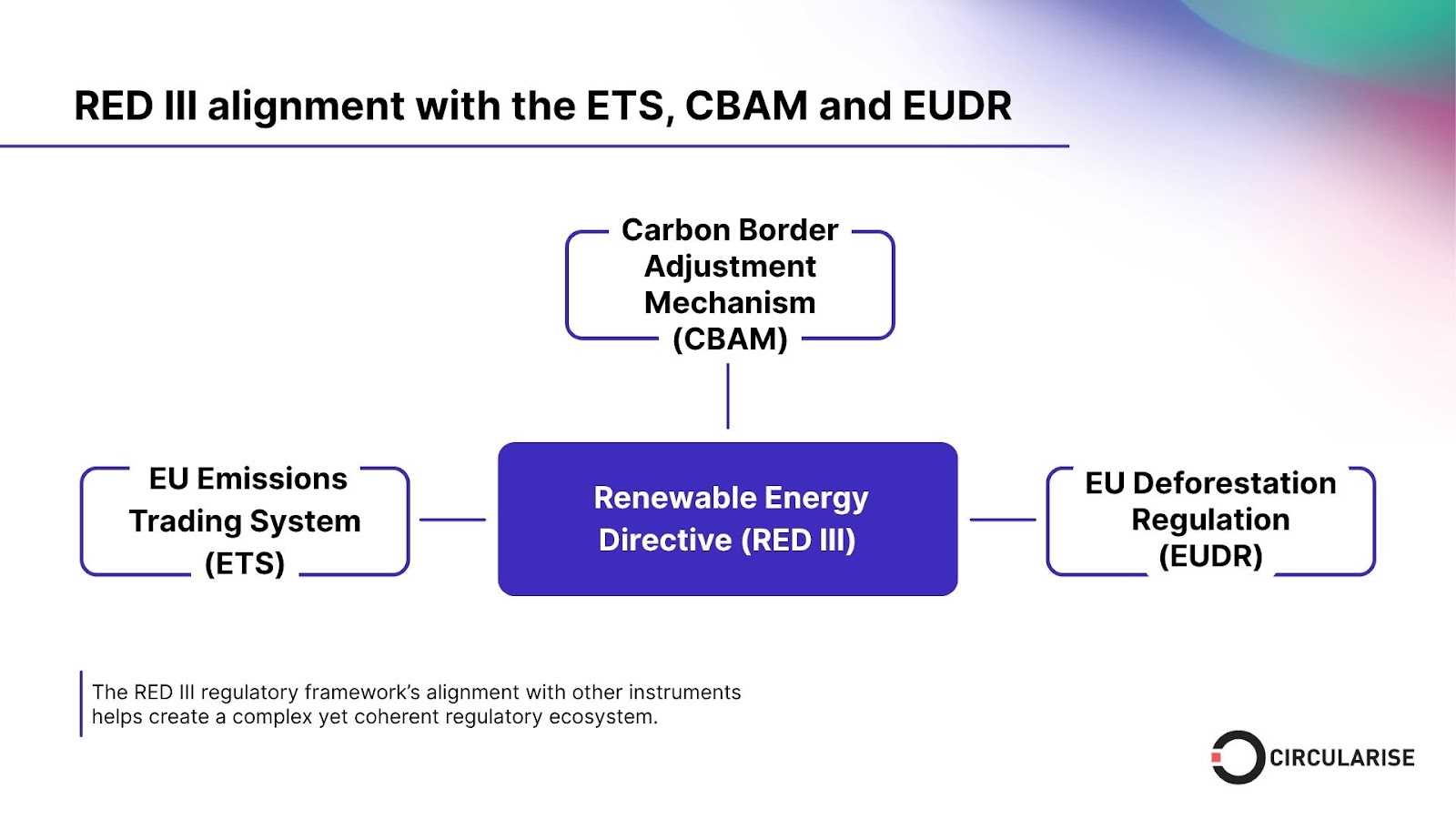The European Union's Renewable Energy Directive (RED) plays a central role in its climate strategy, setting legally binding targets for renewable energy consumption across Member States. Originally introduced in 2009 before a revision in 2018 as RED II, the directive aimed to accelerate the adoption of renewables, particularly in sectors such as transportation and heating, where fossil fuel dependency remains high.
With the adoption of RED III in 2023, the EU has taken a decisive step forward. Replacing RED II, RED III introduces more ambitious targets and compliance measures to align with the broader Fit for 55 climate package. By 2030, the EU seeks to achieve a 42.5% share of renewables in gross final energy consumption, with a stretch target of 45%. For the biofuels sector, this means increased scrutiny, stricter sustainability criteria, and mandatory traceability.
For businesses operating in this space, compliance with biofuels regulation under RED III is no longer optional. The directive's shift toward enforceable certification and mass balance traceability systems marks a new era of transparent, auditable, and cross-border accountability.
What is RED III?
RED III applies across key economic sectors, including transport, electricity, heating and cooling, and industry, setting differentiated targets and compliance mechanisms. The transport sector, in particular, faces a new target: 29% renewable energy by 2030, up from the previous RED II goal of 14%.
GHG savings thresholds for biofuels are also becoming increasingly stringent. Existing installations must now achieve at least 70% savings, while new installations must reach 80%.
RED III continues the 7% cap on food- and feed-based biofuels and further prioritises advanced biofuels (Annexe IX, Part A) and renewable fuels of non-biological origin (RFNBOs), such as green hydrogen. Importantly, all fuels must now meet mandatory sustainability verification and certification requirements, tightening control across the value chain.
RED II vs RED III: Key differences businesses should know
With RED III, traceability and compliance become legally enforceable. Chain of custody systems are no longer a best practice; they are a requirement. This means that every actor in the biofuels value chain (producers, traders, blenders, and end-users) must now demonstrate clear documentation linking the physical product to its sustainability claims. Companies must implement verified tracking mechanisms to prove that each batch of fuel meets RED III’s environmental criteria, from the origin of feedstock to its final use.

The need for traceability in mass balancing is now embedded in the directive’s DNA, mandating granular monitoring of sustainable content across all product batches. This model allows for the co-processing of certified and non-certified materials, but requires that the ratio of certified content be accurately recorded and maintained throughout the chain. RED III’s insistence on this method reflects the EU’s broader ambition to digitise and harmonise sustainability data reporting.
For businesses, this shift redefines the compliance landscape. Under RED II, many aspects of biofuel sustainability were subject to voluntary interpretation or discretion of third-party schemes. RED III transforms these elements into enforceable obligations backed by national audits and European Commission oversight. Companies must now move beyond static documentation and adopt digital, interoperable systems that can withstand scrutiny and support real-time reporting. Those who fail to adapt may risk exclusion from subsidy programmes, export markets, or public procurement opportunities.
How RED III regulates the biofuels market
The updated EU biofuel directive governs a wide array of fuels, ranging from first-generation biodiesel and bioethanol (produced from food and feed crops) to second-generation or advanced biofuels, such as lignocellulosic ethanol and biogas, as well as RFNBOs derived from renewable electricity. The directive favours advanced biofuels and RFNBOs through differentiated targets and incentive eligibility.
Eligibility under RED III is no longer just about emissions; it’s about origin, process, and documentation. Feedstock classification under Annexe IX is essential, with Part A identifying the most desirable feedstocks, while Part B is more restricted. The geographical origin and level of processing also determine whether a fuel qualifies for incentives or contributes towards national targets. Producers, refiners, importers, distributors, and energy-intensive industries are all required to meet new reporting and verification standards.

This regulatory framework doesn’t operate in isolation. RED III aligns with other instruments, such as the EU Emissions Trading System (ETS), the Carbon Border Adjustment Mechanism (CBAM), and the EU Deforestation Regulation (EUDR), creating a complex yet coherent regulatory ecosystem. For a deeper dive into enforcement issues, you can read our recent article on biofuel fraud which explores its implications for EU RED III, US RFS, and global sustainability claims.
Mass balance traceability and chain of custody under RED III
Mass balance traceability is central to RED III compliance. It allows certified and non-certified materials to be mixed along the supply chain, provided that the certified volume is tracked proportionally and transparently throughout. This flexible yet robust model replaces older, looser frameworks such as book & claim, which lacked physical connection to the product, and identity preservation, which proved cost-prohibitive in large supply chains.
Under RED III, the mass balance system must document the origin of feedstocks, lifecycle greenhouse gas (GHG) emissions per lot, and full chain of custody records through production, processing, and distribution. With so many actors involved (across borders and certification schemes), manual processes are no longer adequate. Digital platforms like Circularise’s traceability solution enable real-time compliance monitoring and reduce the risk of audit failures or market exclusion.
This directive signals a broader shift: mass balance traceability is no longer just a sustainability buzzword; it’s becoming the EU standard for demonstrating environmental integrity in renewable energy markets.

Circularise is the leading software platform that provides end-to-end traceability for complex industrial supply chains. We offer two traceability solutions: MassBalancer to automate mass balance bookkeeping and Digital Product Passports for end-to-end batch traceability.
Discover how our solutions can help you maintain compliance with RED III and establish trust in your biofuel supply chain.








